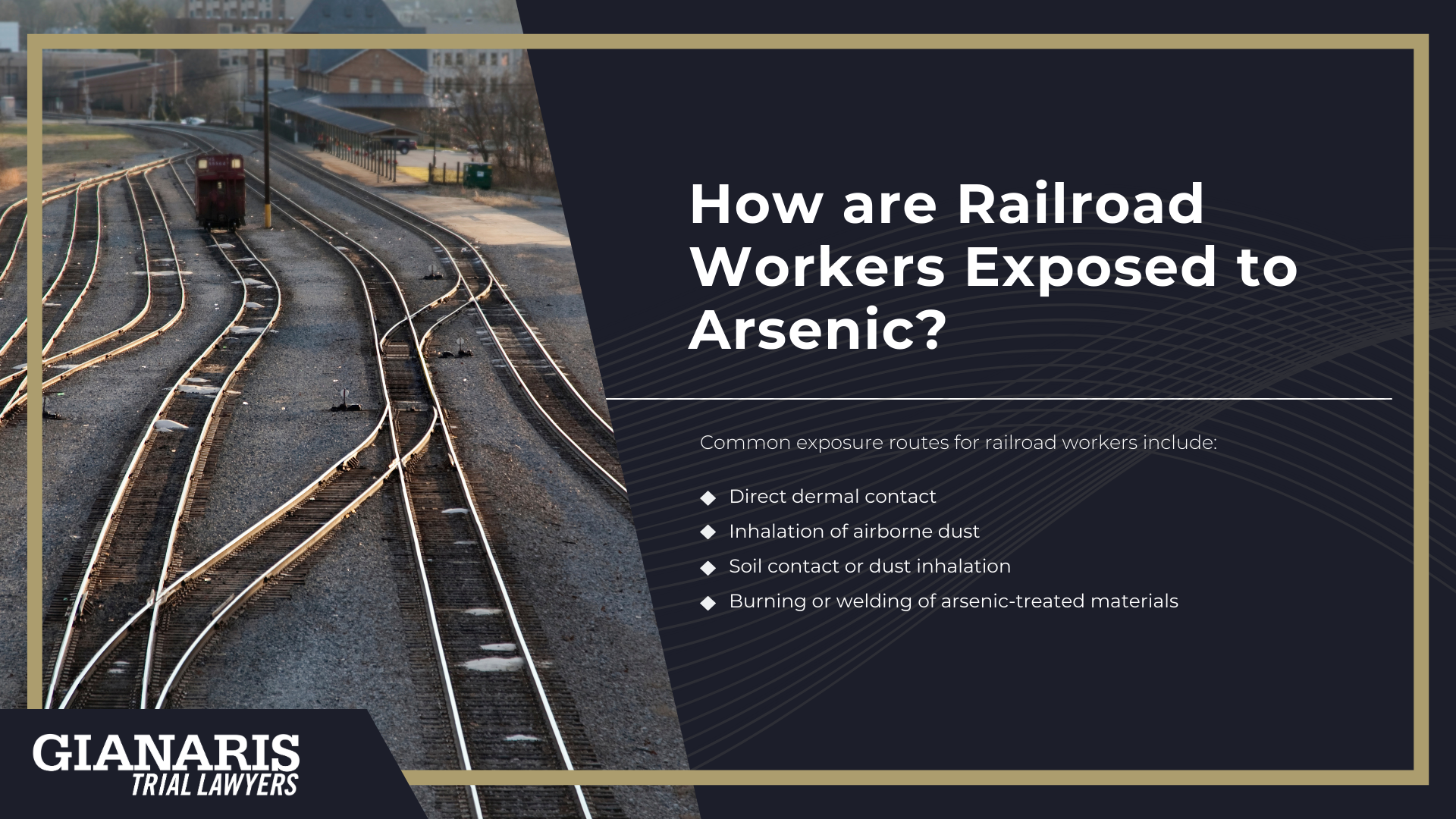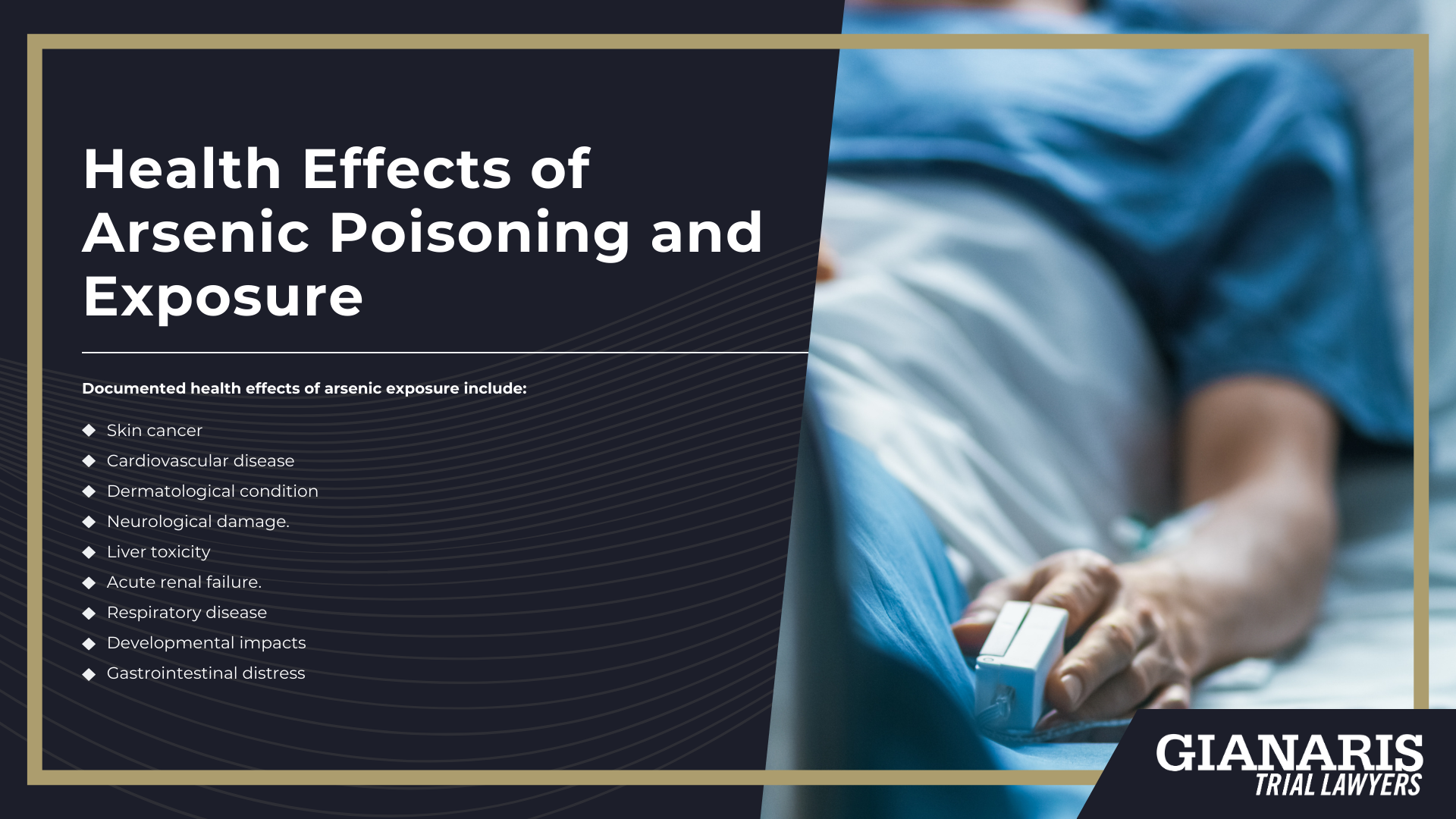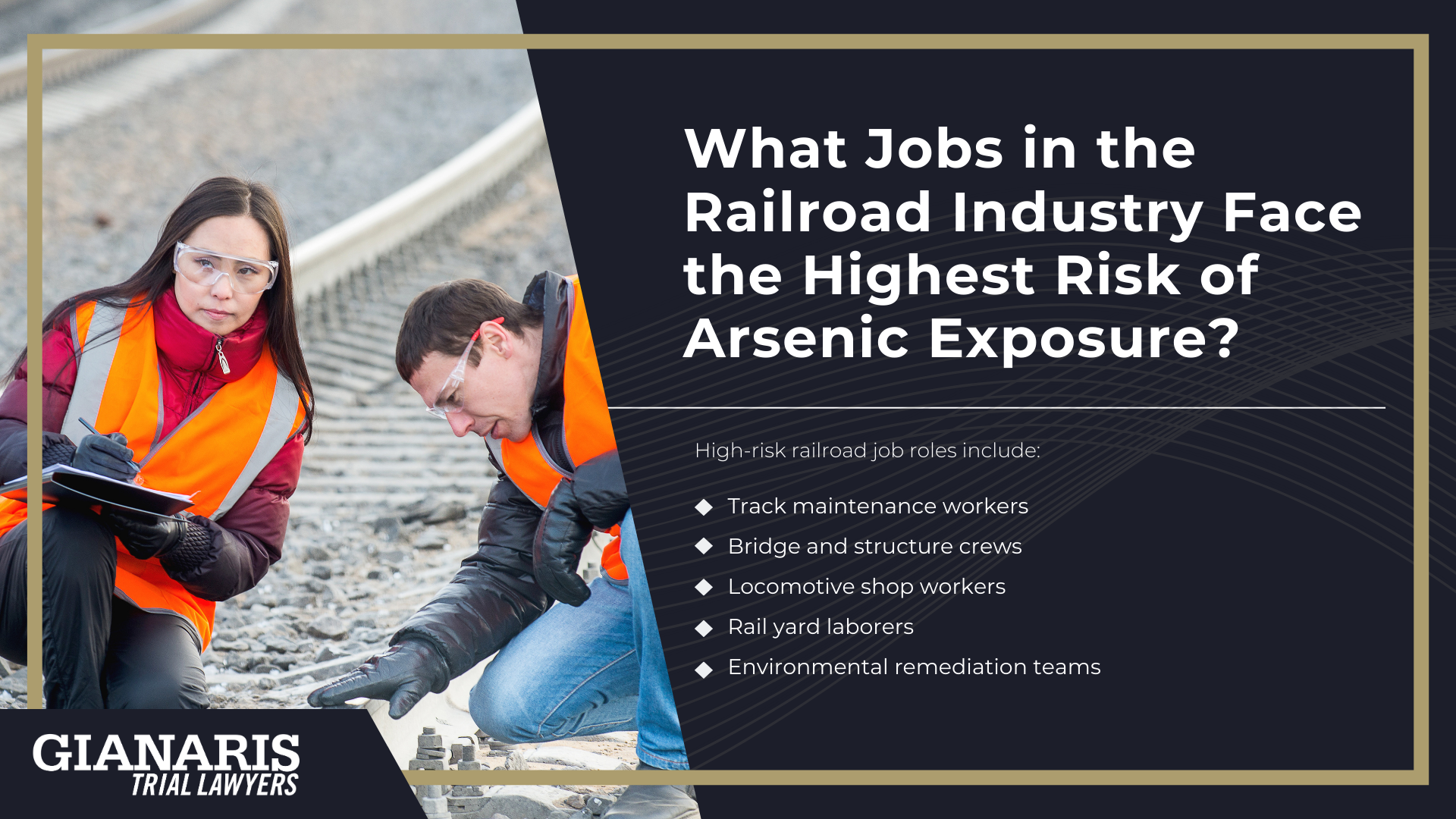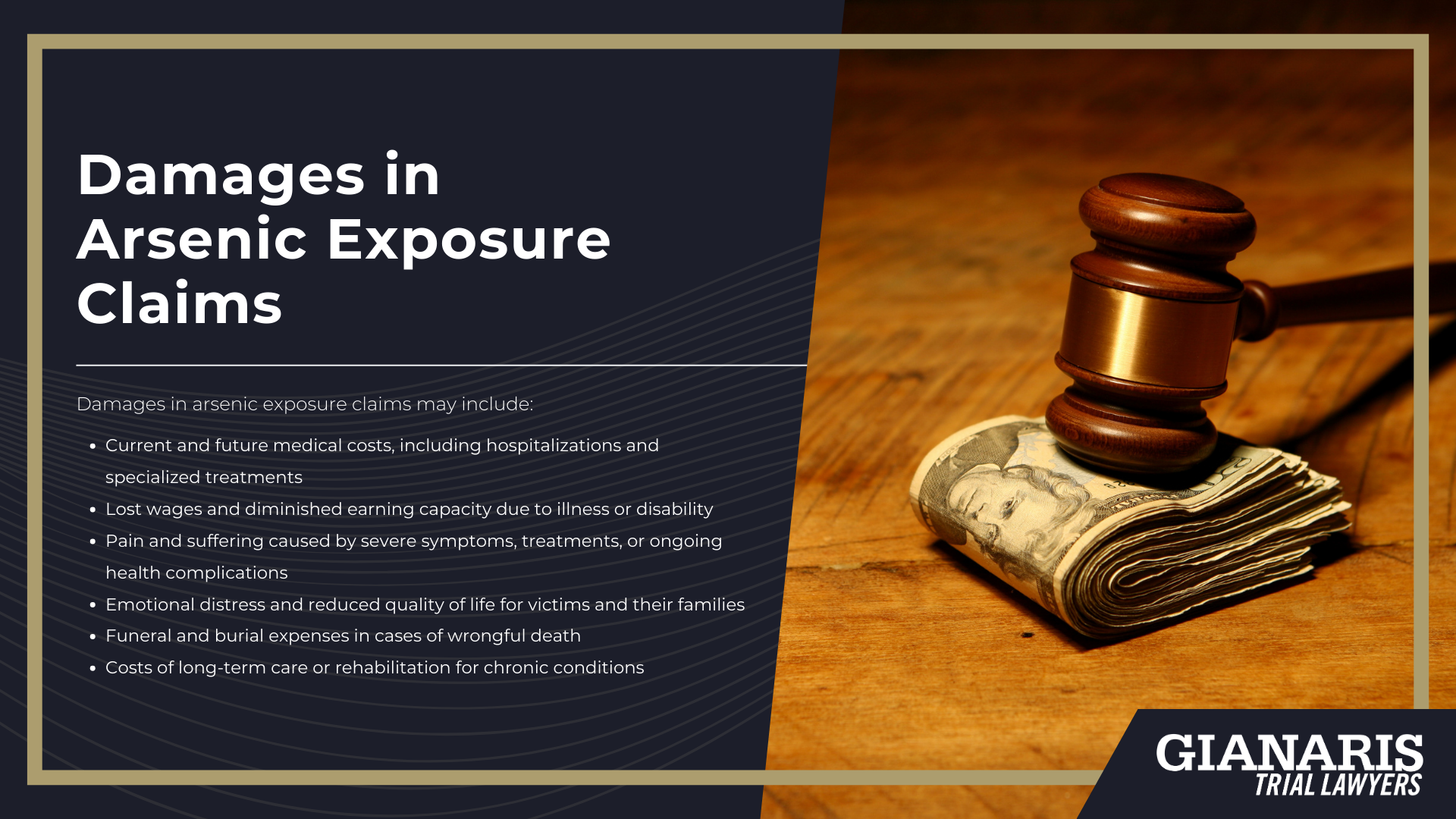Arsenic is a naturally occurring element that becomes highly dangerous in its inorganic forms, such as those historically used in wood preservatives and found in contaminated soils.
These are the primary sources of railway-related exposure.
In railway operations, inorganic arsenic was used in chromated copper arsenate (CCA) formulations to preserve wooden railroad ties, utility poles, and bridge timbers against decay, allowing residues to accumulate on surfaces over time.
Workers who cut, replace, or handle these arsenic-treated materials can absorb inorganic arsenic through skin contact, inhalation of dust or sawdust, and, less commonly, ingestion through hand-to-mouth activity.
Beyond treated wood, railroad workers may also encounter arsenic contamination through soil and groundwater along old rights-of-way, where arsenic has leached from wood preservatives or arsenic-containing slag used in track ballast, leading to elevated arsenic levels in the environment.
If workers come into contact with or disturb these contaminated soils (especially without protection) they may experience chronic arsenic exposure that builds up over long-term occupational activity.
In rare cases, acute arsenic poisoning can occur when workers are exposed to higher doses, such as by burning CCA-treated wood and inhaling the resulting ash and smoke, or through skin contact with concentrated preservative residues.
It’s also important to note that while organic arsenic compounds (commonly found in seafood) are generally much less harmful, they are not the form encountered in railroad work: railroaders are exposed to inorganic arsenic, which poses far greater adverse health effects.

Common exposure routes for railroad workers include:
- Direct dermal contact with CCA-treated railroad ties, poles, bridges, or cut lumber, leading to arsenic absorption through the skin.
- Inhalation of airborne dust or sawdust generated during cutting, grinding, or handling of arsenic-treated wood or contaminated ballast.
- Soil contact or dust inhalation when working on old tracks or yards where arsenic has leached into the ground over time.
- Burning or welding of arsenic-treated materials, generating smoke or fumes that may include arsenic compounds.
These exposure pathways underscore how both long-term occupational contact and acute incidents involving toxic substances can threaten worker health.
Combined with epidemiological studies, which link inorganic arsenic to serious outcomes like skin cancer, lung cancer, and cardiovascular disease, the risks for railroad workers become clear and compelling.
Health Effects of Arsenic Poisoning and Exposure
Arsenic (especially its inorganic compounds) is a major public health concern because even low, chronic exposures are linked to cancer and cardiovascular harm in large human studies.
Epidemiology consistently associates long-term exposure with bladder cancer and lung cancer, outcomes judged to have robust human evidence by the U.S. EPA’s IRIS program and international reviews.
Mechanistically, arsenic inhibits endothelial signaling.
Experimental and translational studies show reduced nitric oxide bioavailability via down-regulation or inhibition of endothelial nitric oxide synthase (eNOS), a pathway tied to vascular dysfunction and cardiovascular disease risk.
Chronic arsenic toxicity also involves oxidative stress and altered growth factors/signal transduction (e.g., EGFR, AP-1, MAPK), which can promote carcinogenesis and tissue injury.
Biomonitoring uses urinary arsenic levels (with speciation to separate inorganic from organic arsenic compounds) to assess dose and link workplace or environmental exposure to disease risk.
In drinking water, high levels of arsenic are tightly regulated because long term exposure drives cancer and cardiometabolic risks; both the World Health Organization and the U.S. Environmental Protection Agency set a 10 µg/L (10 ppb) guideline/standard for arsenic in public supplies.
At very high levels during acute exposure, arsenic (including arsenic trioxide) can cause gastrointestinal distress, hypotension, encephalopathy, and acute renal failure, with case reports documenting rapid multi-organ toxicity after inhalation/ingestion incidents.
Over years, chronic arsenic toxicity manifests as skin changes (hyperkeratosis, hyperpigmentation), peripheral vascular disease, neuropathy, and increased risks of cancers of the skin, lung, and bladder observed across epidemiological studies.

Documented health effects of arsenic exposure include:
- Skin cancer and other malignancies (especially bladder cancer and lung cancer) linked to chronic arsenic exposure in workers and populations with contaminated water.
- Cardiovascular disease caused by vascular dysfunction as arsenic inhibits nitric oxide bioavailability via endothelial nitric oxide synthase interference.
- Dermatological conditions such as hyperkeratosis, hyperpigmentation, and skin lesions after long term exposure to inorganic compounds.
- Neurological damage including peripheral neuropathy and cognitive impairment from chronic arsenic toxicity.
- Liver toxicity and metabolic dysfunction from high levels of arsenic in the blood over time.
- Acute renal failure in cases of acute exposure to large doses, including ingestion of arsenic trioxide.
- Respiratory disease and reduced lung function in workers inhaling dust containing arsenic.
- Developmental impacts through altered growth factors that affect cell signaling and tissue repair.
- Gastrointestinal distress (nausea, vomiting, abdominal pain) in acute poisoning cases.
Railroad workers face unique risks when arsenic in drinking water, toxic substances from track treatments, and ingestion of dust while eating contaminated food contribute to elevated arsenic levels and significant adverse health effects.
What Jobs in the Railroad Industry Face the Highest Risk of Arsenic Exposure?
Railroad workers are primarily exposed to inorganic arsenic compounds when handling treated wood, ballast dust, or during maintenance in older rail yards where arsenic-based products were once widely used.
Jobs that involve frequent contact with soil, dust, or water sources near rail lines often face the highest risk, particularly where contaminated drinking water or runoff may carry elevated levels of arsenic.
Over time, this can lead to chronic arsenic poisoning, while rare but intense exposures can cause acute arsenic toxicity.
Studies show that the total arsenic concentration in some work environments exceeds safe thresholds, increasing the risk of human exposure for those in direct contact with these sources.
Certain roles in the railroad industry face higher risks due to their routine responsibilities.

High-risk railroad job roles include:
- Track maintenance workers – frequent contact with arsenic-treated wooden ties and surrounding soil.
- Bridge and structure crews – exposure when repairing or replacing arsenic-treated timbers.
- Locomotive shop workers – risk from arsenic dust in older facilities with contaminated infrastructure.
- Rail yard laborers – potential human exposure through contaminated drinking water and soil.
- Environmental remediation teams – direct handling of soils and debris with elevated levels of arsenic.







